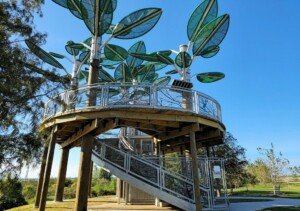The freshly refurbished Antiquarium gives Pompeii a much-needed permanent exhibition space aiming to teach visitors about life in the famous ancient Roman city, destroyed by the eruption of Vesuvius in 79CE. It also brings out of storage many items only seen previously in travelling exhibitions.
“Finally having a museum here at Pompeii means having an introduction to its long history that is often forgotten,” said Massimo Osanna, director of the Archaeological Park of Pompeii, at the museum’s inauguration earlier this week.
Displays will include frescoed walls from villas, ancient graffiti, and everyday items that give an intimate insight into life in the city. The last room is dedicated entirely to the eruption which destroyed the city and its inhabitants. It includes recently produced casts of the human and animal victims from the Civita Giuliana villa. “I find the last room particularly touching,” said Osanna, talking to the Associated Press “One touches with one’s hand the incredible drama of the eruption.”
An explosive history
The refurbishment of Antiquarium and its new iteration comes after a long and chequered history. It was built between 1873 and 1874 by Giuseppe Fiorelli as an exhibition space for archaeological finds from the ancient city and expanded in 1926 by Amedeo Maiuri. However, the building was badly damaged by bombing during the Second World War in September 1943.
It re-opened in 1948 to coincide with the second centenary of the excavation of Pompeii yet disaster struck again in 1980 when it was once again damaged, this time by a devastating earthquake. It re-opened in 2016 as a visitor centre and held temporary exhibitions. Now it returns with a fresh lease of life as a permanent display space for the rich finds of Pompeii, stretching from the Samnite era (4th century BCE) to 79CE.
Digital media
The museum has included two forms of digital media to enhance the visitor experience. The first is a digital assistant which provides service information. The second is an audio narration for visitors taking them around the Archaeological Park of Pompeii, including the Antiquarium, highlighting items of particular interest.
Sign of great hope
Massimo Osanna called the opening of the museum, “A sign of great hope during a very difficult moment”. Italy relies heavily on its tourism industry. Around 4.2 million of the population is employed in the sector. Tourism creates up to 13 percent of the nation’s GDP. It has 55 UNESCO World heritage sites. These include Pompeii, which usually attracts in the region of 2.5 million visitors per year.
At present only local visitors from the Campania region of Italy can visit the museum.
The museum will undoubtedly evolve, as large sections of Pompeii are yet to be excavated. A $140 million restoration project launched in 2012 and archaeologists have continued to work during the pandemic. Last month it was revealed that Pompeiians liked to eat out as archaeologists discovered an ancient fast-food outlet.
Building the future on the past
Italy is clearly looking to the future, capitalising on its rich history with other attractions aimed at the tourist sector. Earlier this month, it announced that the pleasure gardens of the infamous Roman emperor Caligula would open in Rome. The subterranean Nymphaeum Museum of Piazza Vittorio is set to open this spring following a $3.5 million excavation.
Meanwhile the capital’s Colosseum is planning a $22 million retractable floor. The floor will expand the appeal and reach of the UNESCO World Heritage site. The Colosseum is one of the most visited attractions in the city and attracts seven million tourists per year. The high tech floor will offer the opportunity for performances such as concerts or theatrical events.
Images courtesy The Archeological Park of Pompeii
















